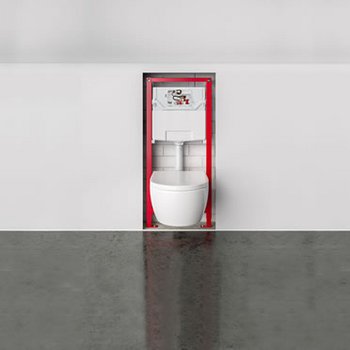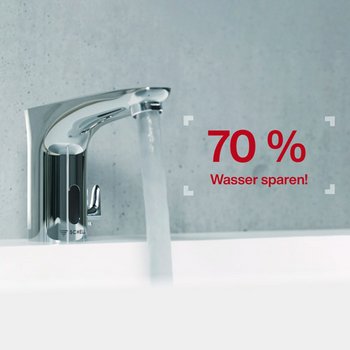How T-piece installations took back the crown
T-piece installations have never really lost their status as a generally recognised code of practice. More than 10 years ago, however, they had all but vanished, especially in healthcare facilities – replaced by serial installations or ring installations with Venturi nozzles. Unfairly so, as we now know today and as a recent comparative analysis of various installation types has confirmed.
A change in direction is sometimes difficult to make. Even more so when that change is 180°. Such a change has been happening for around 3 years in pipe routing and shows no sign of slowing down. One of the reasons for this is that, over the last 10 years, we have had more issues with Legionella in potable water cold (PWC) than in potable water hot (PWH). We also know why: the building envelope has become denser and denser during this period, while installations have grown increasingly complex and given more tapping points – with no change in the number of users. So it’s time to pause for a moment and analyse the situation. What is unavoidable and what is a problem of our own making? As an answer to this, the industry is once again going back to its roots and planners now tend to favour T-piece installations – even in healthcare facilities. At the same time, rarely used but unavoidable tapping points are integrated with serial installations or ring-in-ring installations.
As a result, the exchange of water must also be performed at all tapping points to maintain water quality. One risk for drinking water hygiene is posed by unused tapping points, as these are an unacceptable section of ‘dead pipe’. In serial installations and ring-in-ring installations, these sections of dead piping also run unavoidably from the through wall bushing to the outlet from a tapping point.
The diagrams presented below illustrate the problem. In water samples from this school canteen, elevated colony counts were found at the tapping points, despite a flush volume of 300 m³ within two weeks (only from flushing stations). The canteen failed inspection.
Acceptable results were only achieved by an exchange of water across all tapping points as required by the standard, with the installation then passing inspection:
Evaluation: The composition of the sample corresponds to requirements from the German Drinking Water Regulation in terms of parameters analysed.
Source: Peter Arens
In light of the above, more and more fit-out planners and tradespersons have been asking why expensive piping arrangements (sometimes virtually unmanageable from a hydraulic perspective) should be used, if the problem of the dead pipe from the wall bushing to the tapping point outlet cannot be resolved, even with flushing stations.
T-piece installations as a generally recognised code of practice
T-piece installations have never lost their status as generally accepted industry practice – even if past technical articles seem to suggest this. Support for this statement can be found by looking at the technical codes and installation practice. Fit-out planners and the skilled trades have always liked this kind of piping arrangement – with its clear-cut flow paths, low water volume and head loss, and (above all) minimal surface area. Keeping the surface area as small as possible not only keeps places where bacteria might grow to a minimum but also ensures less heat is absorbed (PWC) and less heat is lost (PWH). Surface area is therefore one of the most important passive measures for protecting potable water cold against heating and therefore preventing the excessive spread of Legionella. Circulating drinking water should also be avoided as far as possible in pre-wall installations and right up to each tapping point. The latter was definitely the wrong approach, which led to excessively warm and highly contaminated fittings. Circulating potable water hot in pre-wall installations poses an essentially avoidable risk (and one not covered by codes of practice) of heating the cold water line and the fittings. This risk can be safely avoided and without major structural effort by applying the ‘max. 3-litre rule’, which continues to be valid (DVGW W 551 and DIN 1988-200). As an example, 10 metres of piping with a 15 mm diameter has a volume of only 1.5 litres, and can be safely and hygienically operated with a 4.2 l/min fitting.
Summary
Taking another look at apparently well-established types of installations is definitely worth doing for hygienic reasons. The incorporation of rarely used but unavoidable tapping points with serial installations or ring-in-ring installations can continue to be practiced in the future – but with a sense of proportion.

![[Translate to English:] [Translate to English:]](/fileadmin/_processed_/1/b/csm_symstemloesungen_e2_thumb_6bca267f26.jpg)























![[Translate to English:] [Translate to English:]](/fileadmin/user_upload/images/menu/menu_service_downloads_broschueren.jpg)








![[Translate to English:] [Translate to English:]](/fileadmin/_processed_/7/7/csm_menu_unternehmen_ueber-schell_awards_f6cec25b1d.jpg)
![[Translate to English:] [Translate to English:]](/fileadmin/_processed_/a/0/csm_menu_unternehmen_ueber-schell_wasser-sparen_41036d2dd9.jpg)









